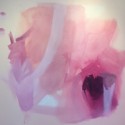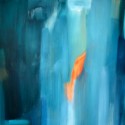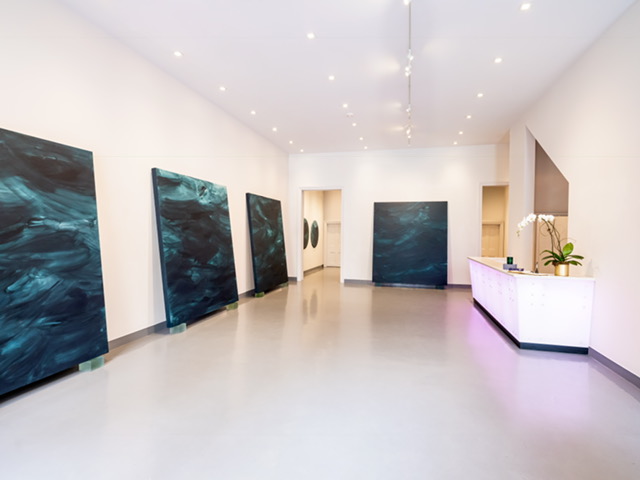
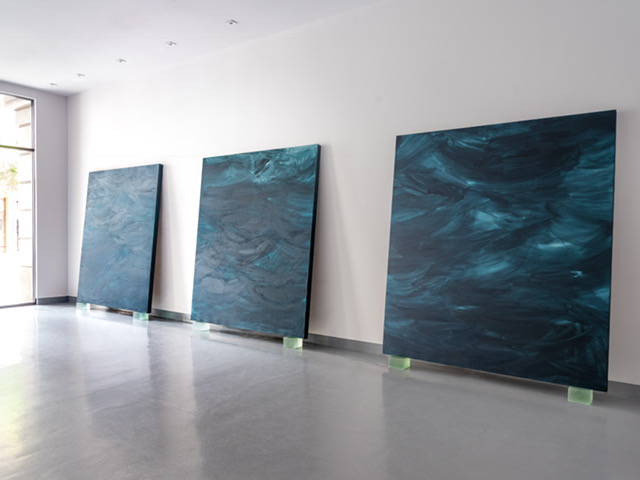
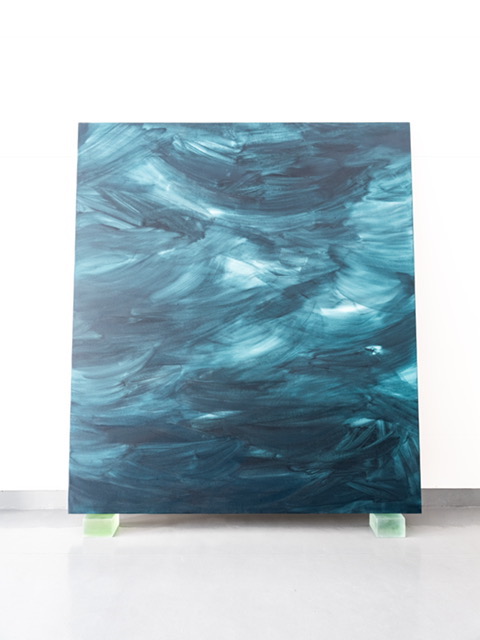
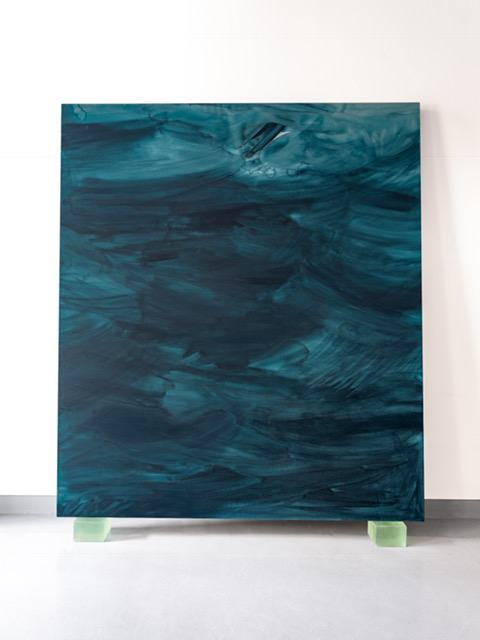
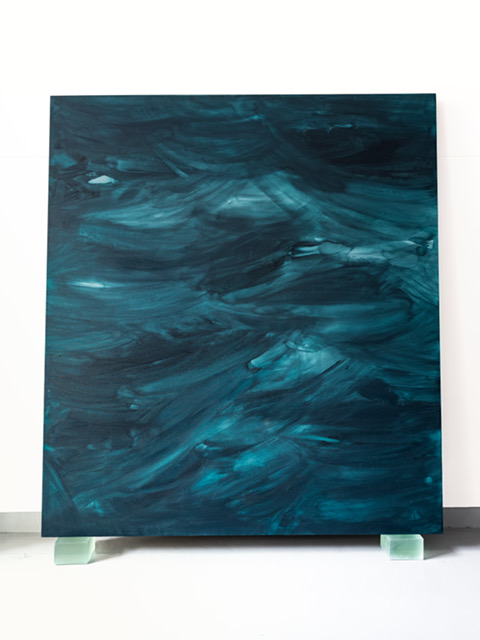
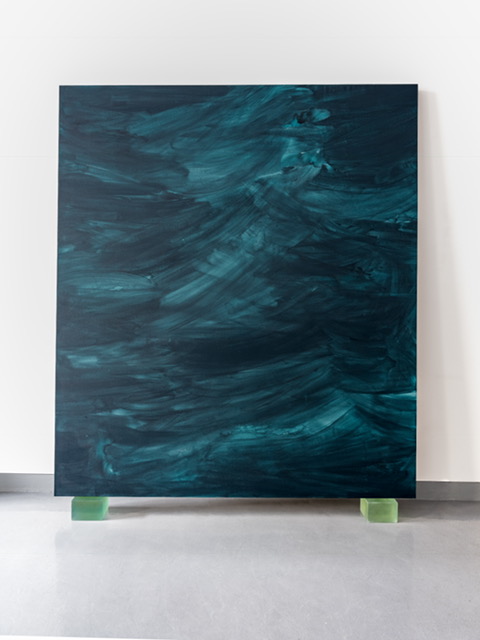
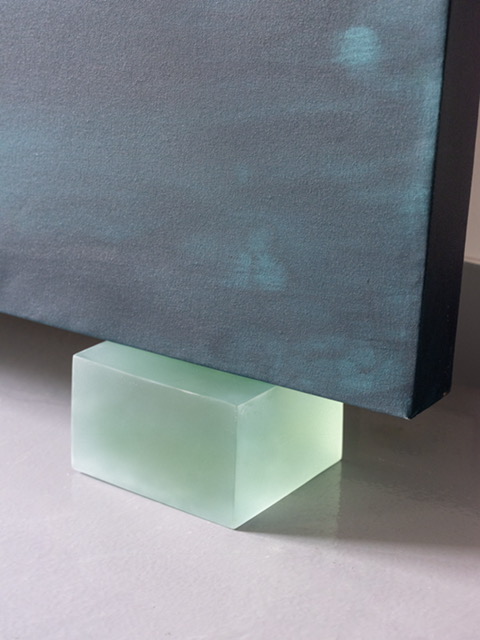
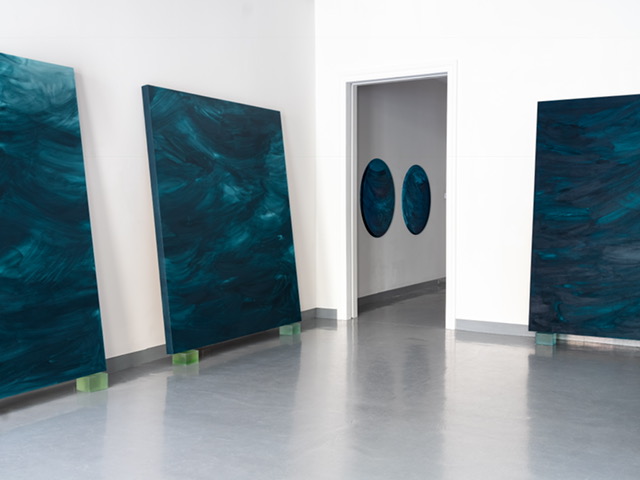
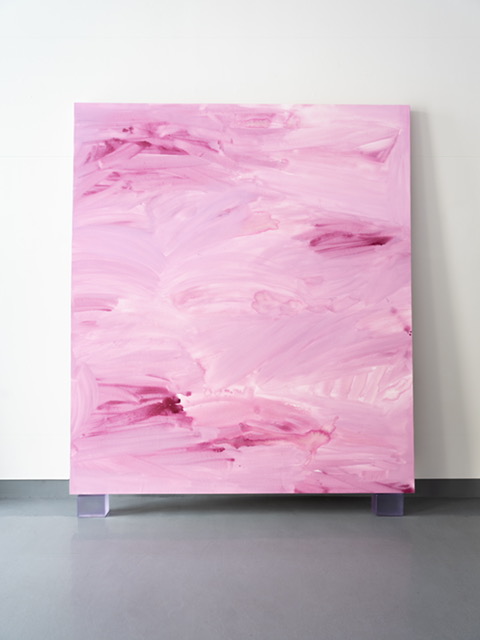

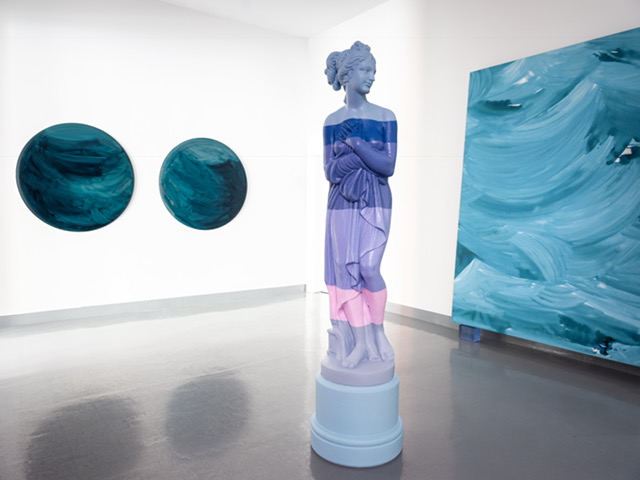
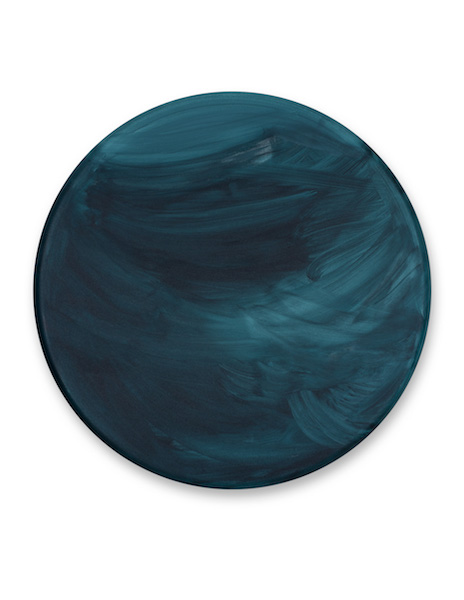


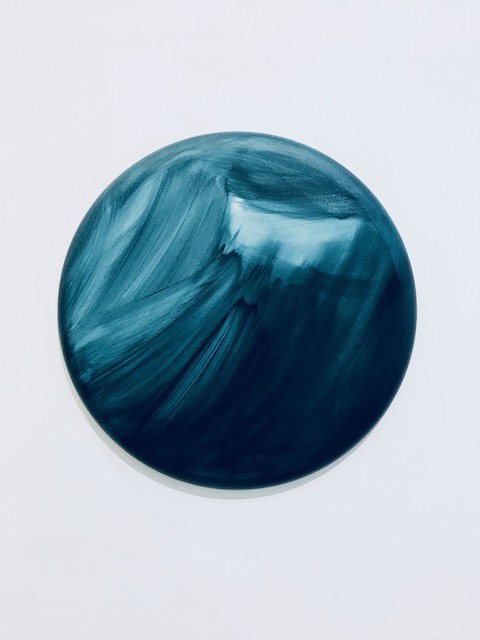
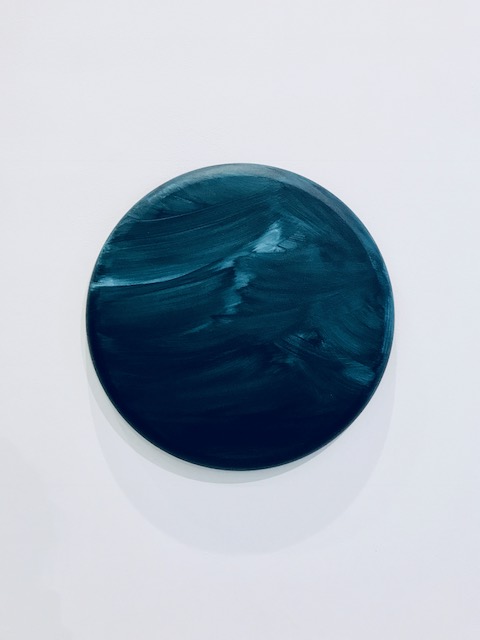
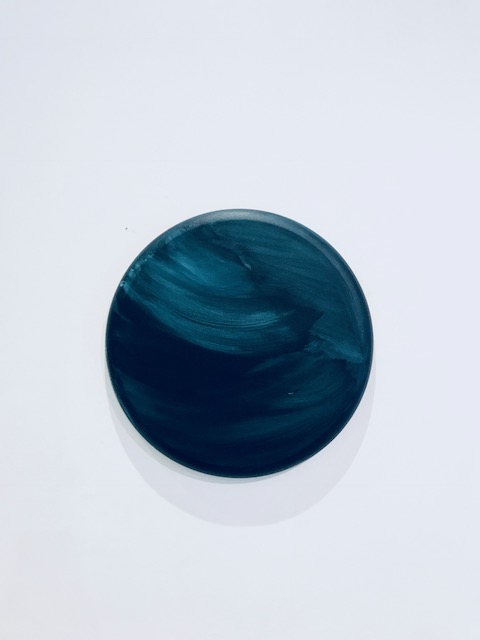
ALL INSTALLATION PHOTOS BY PAUL COSTELLO
The nine works in A Ponderous Weight continue Page’s exploration of monochrome and how measured changes in a single hue can effect shifts in visual perception. Page’s study of blue in this new series is influenced by the sensuous descriptions of the sea in Kate Chopin’s turn-of-the-century and early feminist novel The Awakening.
In the gallery’s first room, four blue works sized 83” x 95” will be positioned on top of small resin risers created by the artist. Unlike Page’s previous paintings, where brush and pouring motions are predominantly vertical, here Page has applied paint horizontally, with layers of paint choreographed on each canvas to recall the slow movement of water in the Gulf. Page has also limited herself to singular color in these new works, rather than multiple colors applied to be perceived as one, masterfully manipulating one color to render effects of lightness, transparency, motion and difference.
In the gallery’s back room, works will be positioned facing each other on opposite walls. On the first wall will hang a large pink work—the only non-blue work in the exhibition. On the facing wall, four circular paintings in hues of blue will surround a life-size, painted figure of Aphrodite. Here, the artist draws attention to concepts of opposition and transformation, a meditation of sorts on the antagonistic impulses that define Chopin’s heroine as well as on the inner conflict she experiences while moving from a woman rooted in Creole society toward a life defined by sensuality and candor. Page also imagines here another more mystical transition, in which the female figure emerges from the gulf as Aphrodite, the ancient Greek goddess of love, beauty, pleasure, and procreation who was born from the sea.
Statement from Mallory Page:
With this year marking the New Orleans tricentennial, I’ve spent a lot of time pondering my relationship to this region of Louisiana — as a woman, an artist, as a wife, etc. I’ve thought, too, about the three centuries of women artists who have come before me — Kate Chopin, Ida Kohlmeyer, Irma Thomas, and Lynda Bengelis, to name a few. Though our artistic mediums differ, we have all used art to explore questions of identity as related to our distinct, inspiring, and complex cultural terrain.
Over the past several years, I’ve continually returned to 19th-century author Kate Chopin and her famed exploration of a woman’s identity in The Awakening. The novel takes place primarily on Grand Isle, not far outside of New Orleans, and follows Edna Pontellier — a woman who, in a period of self-discovery turns away from societal convention and toward a more primal and passionate existence. What most people remember about the novel is the final scene, where Edna drowns herself in the Gulf. Was she right, was she wrong, is she now emancipated from societal trappings, was it death or baptism and rebirth, is she a Creole Aphrodite? All valid questions, of course. For me, though, it’s Edna’s relationship with the sea—something simultaneously terrifying and invigorating—that has captured my imagination for so long and that has inspired my study of blue in this exhibition.
From the very first pages of the novel, the sea emerges as a sensuous, complex character in its own right. Edna’s sea is “seductive,” “mournful,” “sizzling” with flame. It is “the unlimited,” an “abyss of solitude” that invites “inward contemplation.” It ignites feelings of “intoxication” and inspires “breaths of freedom.” It is both frightening and comforting. It “clamours” and “murmurs” as its breaks upon the shore.
Through Edna’s relationship with the sea, we witness a woman exploring her own consciousness—or as we read, her “position in the universe.” This relationship has provided me with a framework for a meditation on my own identity, and on my place as woman and an artist in Louisiana, which I honor and explore here with this new body of work.
Excerpt from The Awakening by Kate Chopin (1899)
Chapter IV
A certain light was beginning to dawn dimly within her,—the light which, showing the way, forbids it. At that early period it served but to bewilder her. It moved her to dreams, to thoughtfulness, to the shadowy anguish which had overcome her the midnight when she had abandoned herself to tears.
In short, Mrs. Pontellier was beginning to realize her position in the universe as a human being, and to recognize her relations as an individual to the world within and about her. This may seem like a ponderous weight of wisdom to descend upon the soul of a young woman at twenty-eight — perhaps more wisdom than the Holy Ghost is usually pleased to vouchsafe to any woman.
By the beginning of things, of a world especially, is unnecessarily vague, tangled, chaotic, and exceedingly disturbing. How few of us ever emerge from such beginning! How many souls perish in its tumult!
The voice of the sea is seductive; never ceasing, whispering, clamoring, murmuring, inviting the soul to wander for a spell in abysses of solitude; to lose itself in mazes of inward contemplation.The voice of the sea speaks to the soul. The touch of the sea is sensuous, enfolding the body in its soft, close embrace.
About Mallory Page
Mallory Page (b. 1983) is a New Orleans-based artist specializing in large-scale abstract paintings. Her compositions employ multiple layers of monochromatic hues applied with various techniques over the course of many weeks. Through abstract studies of color, her work explores essential elements of painting, and how calculated manipulations of shape and color can effect shifts in visual understanding. Born and raised in Louisiana, Page’s work engages abstractly with her heritage and with questions of identity — i.e. the position of an independent woman and artist within a more traditional social terrain. Her paintings are held in private collections internationally and has been featured in Architectural Digest, House Beautiful, Southern Living, and Whitewall, among others. Page is a graduate of Louisiana State University. She travels back and forth between her home in New Orleans and her studio on the Northshore of Lake Ponchartrain.
